David Robbins's Blog, page 6
May 18, 2014
PERCHANCE TO DREAM: WILDERNESS #67 THE GIFT
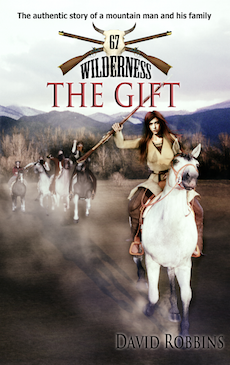
David Robbins© 2014
Long before bucket lists were invented, people dreamed. They dreamed of going places they had never been, dreamed of doing things they had never done.
Almyra Temple has a dream. She’s always wanted to see the Rocky Mountains. She’s heard so much about them. How high they are. How magnificent they are. But the Rockies are over a thousand miles away, and she has her beloved Judson and their farm. Then Judson passes on, and Alymra has one wish before she joins him. She will go to the Rocky Mountains.
So what if she has grey hair and isn’t as spry as she used to be? So what if she is alone? And, especially, so what if she is a woman? Since when should being female stop someone from doing what they want to do?
Don’t go, everyone says. There are too many dangers. There are beasts and hostiles and men who break the law as casually as they breathe. She won’t make it back alive, so please don’t go.
Almyra does anyway, and in doing so, her path crosses that of another, much younger, dreamer.
Evelyn King’s dream is more down-to-earth. She lives in the Rockies and sees them every day. They don’t impress her nearly as much as the handsome Nansusequa boy her age. Her dream is to get away alone with him for a while. It’s a brazen dream, in defiance of her ma and her pa. But she can’t deny her heart.
Two dreamers, whose paths will eventually cross, and lead to happiness and tears.The happiness, in discovering one another.The tears……..
Micajah Gantry and his brothers and cousin have a dream. They dream of finding somewhere they can do what they like to do best without having to worry about the law. They dream of being able to rob and kill to their hearts’ content, and not be hung or shot. The Rocky Mountains, they hear, are such a place. There’s precious little law, and plenty of lambs to prey on.
Some dreams are dreams of beauty. Some dreams are dreams of love. Some dreams, alas, are nightmares.
WILDERNESS #67: THE GIFT. Where dreams clash. Where dreamers, if they are not careful, have their dreams forever shattered. Don’t miss it.Buy your copy today.

Published on May 18, 2014 22:49
April 15, 2014
THE BRIDGES OF MADISON COUNTY: REAL IS AS REAL DOES
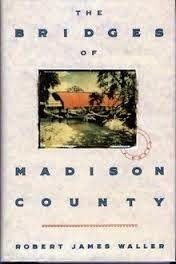 David Robbins© 2014
David Robbins© 2014Want to get into a heated discussion at a party or most anywhere else? Ask this: ‘Is there such a thing as true love’? Some will say that’s a no-brainer, of course there is. Others will say it’s a delusion, that ‘true love’ is nothing more than ‘romantic love’. You will even find some who say love itself is a fiction, all those Romance novels notwithstanding.
For those who do believe there’s such a thing as love, and especially for those who exalt the ideal of a ‘one true love’, then THE BRIDGES OF MADISON COUNTY is for you.
You might have seen the movie starring Clint Eastwood and Meryl Streep and be unaware that the film is based on a terrific novel by Robert James Waller.
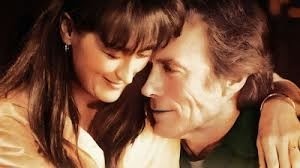
[A tender scene from the movie version. It was a box office hit, which shouldn't have surprised anyone since the novel has sold over 50 million copies.]
The story in a nutshell is about a photographer by the name of Robert Kincaid who meets a married lady by the name of Francesca Johnson and each turns out to be the other’s one true love.
But wait, you say. She’s married? Ay, and there’s the rub, as Shakespeare would have it.
In a perfect reality, all of us would meet and marry our true love and live happily ever after. But reality, as anyone who has ever stubbed a toe will attest, is far from perfect. In the world in which we live, people join in unions with others for a variety of reasons, many of which have nothing to do with true love, and, in some instances, nothing to do with any kind of love at all.
BRIDGES is about the true kind. About a love that pierces the heart. About a love so profound, it resonates in the core of our being. And, alas, about the tragedy of finding that love too late. About what happens when you meet your soul mate, and life denies you the union you so longingly crave.
Those who think romance is nothing more than ‘make believe’ will scoff at the notion. Those who have experienced it will delight in this wonderful story told in exquisite prose that perfectly captures the minds and personalities of a latter-day Romeo and Juliet.
To show you I’m not making it up about the prose, consider this excerpt tendered to whet your interest: ‘With her face buried in his neck and her skin against his, she could smell rivers and wood-smoke, could hear steaming trains chuffing out of winter stations in long-ago nighttimes, could see travelers in black robes moving steadily along frozen rivers and through summer meadows, beating their way toward the end of things.'
THE BRIDGES OF MADISON COUNTY. Take a drink from the bittersweet nectar called life.
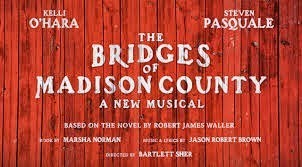
[In case the book and the movie aren't enough MADISON for you, check out the musical.]
[image error]
Published on April 15, 2014 19:47
THE BRIDGES OF MADISON COUNTY: REAL IS AS REAL DOES
 David Robbins© 2014
David Robbins© 2014Want to get into a heated discussion at a party or most anywhere else? Ask this: ‘Is there such a thing as true love’? Some will say that’s a no-brainer, of course there is. Others will say it’s a delusion, that ‘true love’ is nothing more than ‘romantic love’. You will even find some who say love itself is a fiction, all those Romance novels notwithstanding.
For those who do believe there’s such a thing as love, and especially for those who exalt the ideal of a ‘one true love’, then THE BRIDGES OF MADISON COUNTY is for you.
You might have seen the movie starring Clint Eastwood and Meryl Streep and be unaware that the film is based on a terrific novel by Robert James Waller.

[A tender scene from the movie version. It was a box office hit, which shouldn't have surprised anyone since the novel has sold over 50 million copies.]
The story in a nutshell is about a photographer by the name of Robert Kincaid who meets a married lady by the name of Francesca Johnson and each turns out to be the other’s one true love.
But wait, you say. She’s married? Ay, and there’s the rub, as Shakespeare would have it.
In a perfect reality, all of us would meet and marry our true love and live happily ever after. But reality, as anyone who has ever stubbed a toe will attest, is far from perfect. In the world in which we live, people join in unions with others for a variety of reasons, many of which have nothing to do with true love, and, in some instances, nothing to do with any kind of love at all.
BRIDGES is about the true kind. About a love that pierces the heart. About a love so profound, it resonates in the core of our being. And, alas, about the tragedy of finding that love too late. About what happens when you meet your soul mate, and life denies you the union you so longingly crave.
Those who think romance is nothing more than ‘make believe’ will scoff at the notion. Those who have experienced it will delight in this wonderful story told in exquisite prose that perfectly captures the minds and personalities of a latter-day Romeo and Juliet.
To show you I’m not making it up about the prose, consider this excerpt tendered to whet your interest: ‘With her face buried in his neck and her skin against his, she could smell rivers and wood-smoke, could hear steaming trains chuffing out of winter stations in long-ago nighttimes, could see travelers in black robes moving steadily along frozen rivers and through summer meadows, beating their way toward the end of things.'
THE BRIDGES OF MADISON COUNTY. Take a drink from the bittersweet nectar called life.

[In case the book and the movie aren't enough MADISON for you, check out the musical.]

Published on April 15, 2014 19:47
March 20, 2014
THE SANDS OF THE KALAHARI: BURNS INTO YOUR BRAIN
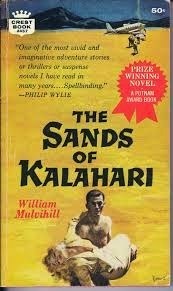
David Robbins
© 2014
If you follow my blog or are a member of the Asylum, you’re all too familiar with my lament about the many fine writers who have fallen by the wayside over the years. Once popular, once widely read, now not so much.
William Mulvihill is a writer you might not have heard of, but if you like a riveting story, have I got a beaut for you. THE SANDS OF THE KALAHARI burns into your brain with a searing tale of survival in one of the most inhospitable environments on the planet, the Kalahari Desert.
Published in 1960, the story holds up well even today. A plane crash sets the tale in motion. Half a dozen passengers suddenly find themselves in a brutal struggle to stay alive. Mulvihill creates vivid characters the reader can relate to, and in most cases, sympathize with their plight.
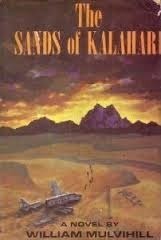
[The cover at the top is from a paperback version. This is the hardback.]
The survivors stumble on an outcropping where there is a cave and water and food. They see it as their salvation. But a troop of large baboons already occupy the outcropping, and they see the humans as invaders.
This is a multilayered tale, violent at times, rife with sexual tension. The theme might be called ‘survival of the fittest’, only with a unique twist.
A movie was made starring Stuart Whitman, Stanley Baker and Susannah York. Surprisingly, Hollywood stuck true to the story---except for the ending. They completely changed it, which was a shame. The ending of the novel is like a punch to the gut, a visceral, emotional climax that screams an elemental truth.
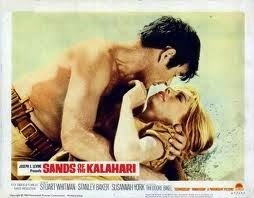
[Did I mention a certain kind of tension? The movie got that part exactly right.]
But don’t take my word for it. Philip Wylie, of GLADIATOR fame, praised it as “One of the most vivid and imaginative adventure stories……I have read in many years.”

[Survival of the fittest? You have no inkling how far he will take it.]
So if you’ve read every book in your library twice and you're looking for a story that once you start reading, you can’t put it down, permit me to recommend SANDS OF THE KALAHARI. Just keep a bucket of water handy. I wasn’t kidding about it burning into your brain. J
 [The art for the DVD and the Blu-ray. Mess with ferocious baboons and you better be ready for some fang and claw.][image error]
[The art for the DVD and the Blu-ray. Mess with ferocious baboons and you better be ready for some fang and claw.][image error]
Published on March 20, 2014 23:15
THE SANDS OF THE KALAHARI: BURNS INTO YOUR BRAIN

David Robbins
c 2014
If you follow my blog or are a member of the Asylum, you’re all too familiar with my lament about the many fine writers who have fallen by the wayside over the years. Once popular, once widely read, now not so much.
William Mulvihill is a writer you might not have heard of, but if you like a riveting story, have I got a beaut for you. THE SANDS OF THE KALAHARI burns into your brain with a searing tale of survival in one of the most inhospitable environments on the planet, the Kalahari Desert.
Published in 1960, the story holds up well even today. A plane crash sets the tale in motion. Half a dozen passengers suddenly find themselves in a brutal struggle to stay alive. Mulvihill creates vivid characters the reader can relate to, and in most cases, sympathize with their plight.

[The cover at the top is from a paperback version. This is the hardback.]
The survivors stumble on an outcropping where there is a cave and water and food. They see it as their salvation. But a troop of large baboons already occupy the outcropping, and they see the humans as invaders.
This is a multilayered tale, violent at times, rife with sexual tension. The theme might be called ‘survival of the fittest’, only with a unique twist.
A movie was made starring Stuart Whitman, Stanley Baker and Susannah York. Surprisingly, Hollywood stuck true to the story---except for the ending. They completely changed it, which was a shame. The ending of the novel is like a punch to the gut, a visceral, emotional climax that screams an elemental truth.

[Did I mention a certain kind of tension? The movie got that part exactly right.]
But don’t take my word for it. Philip Wylie, of GLADIATOR fame, praised it as “One of the most vivid and imaginative adventure stories……I have read in many years.”

[Survival of the fittest? You have no inkling how far he will take it.]
So if you’ve read every book in your library twice and you're looking for a story that once you start reading, you can’t put it down, permit me to recommend SANDS OF THE KALAHARI. Just keep a bucket of water handy. I wasn’t kidding about it burning into your brain. J
 [The art for the DVD and the Blu-ray. Mess with ferocious baboons and you better be ready for some fang and claw.]
[The art for the DVD and the Blu-ray. Mess with ferocious baboons and you better be ready for some fang and claw.]
Published on March 20, 2014 23:15
February 28, 2014
JANE GASKELL: FLIGHTS OF WONDERFUL FANCY
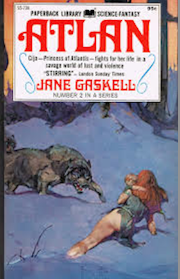
David Robbinsc 2014
Do you enjoy fantasy novels? Then I have a heads up about a lady and her works that you might appreciate.
The author’s name is Jane Gaskell. She has written over a dozen books in different genres. Those that concern us here are her exquisite flights of imagination dealing with the legendary Atlantis.
Her Atlan Saga, as it is known, includes four books. (Well, five, depending on which ones you get, but more on that in a bit.). They relate the adventures of Cija, a girl raised to believe she’s a goddess---and that all the men have been wiped out. Then she's let loose into the real world, which in her case is South America during an early age when dinosaurs roamed and half-reptilian hybrids ruled.
That synopsis doesn’t do Gaskell justice. She's a marvelous storyteller who imbues her tales with a sensual maturity years ahead of their time.
The first installment in the Atlan Saga came out in 1963. It was called THE SERPENT. In 1965 the second book, ATLAN, was released. (I discovered it in a bookstore, devoured it, and ordered the first. I’ve been a fan of hers ever since.) THE CITY and SOME SUMMER LANDS were the final two books in the series.
Easy enough to remember, you’re thinking, but here’s where it becomes complicated. In 1975 someone decided to divide THE SERPENT in half and make two novels out of it. Why, I have no idea. It was perfectly fine as it was. Not only did they split it in half, they called the first half THE SERPENT---the same title as the former complete version---and the second half THE DRAGON.
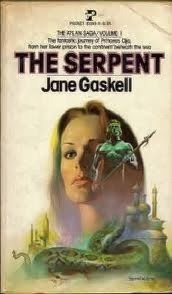
[The first half of the original, now called Volume I, with the same title.]
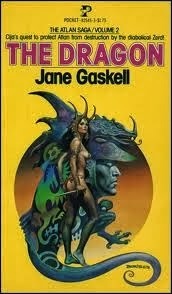 [The second half of the original, now called Volume II, with a new title.]
[The second half of the original, now called Volume II, with a new title.]If you decide to track the Atlan Saga down, keep that in mind or you could end up buying only half the first book and not realize it.
A simple excerpt can’t begin to convey Gaskell's energetic prose, but here’s a taste:‘The sounds and sights were nightmare. I was the only non-fighter on the ground. I kept edging towards the deeper undergrowth. Miraculously, and after a lifetime, I had nearly reached it when a wolf turned and saw me. Its head was nearly on a level with mine, and its pupils were like crosses fleering out of the green irises so alien in the sloping face of fur, so wide apart to be looking at me both together, that I felt giddy.It paced towards me.’
Fan your interest? Again, the lady’s name is Jane Gaskell, and if you’re looking for something new to read, you might find her the treat I did.
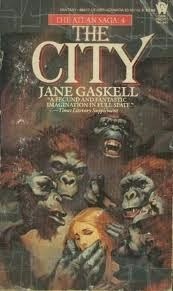 [Depending on which version of the first novel you buy, this is the third---or fourth---book in the series.]
[Depending on which version of the first novel you buy, this is the third---or fourth---book in the series.]
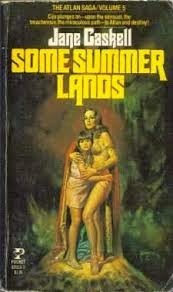 [The last novel in the series. Terrific reads, all of them.]
[The last novel in the series. Terrific reads, all of them.]
Published on February 28, 2014 20:18
February 17, 2014
Heracles, the EARTH GIANT: EDISON MARSHALL
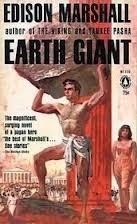
David RobbinsC 2014
If you follow my blog or are a member of the Asylum, you know that I have many times lamented the sad fact that so many superb writers fall by the wayside. In their own time they were read by millions, but with the passage of years and given the constantly changing tastes of the reading public, these fine wordsmiths are consigned to the limbo of the literary lost.
Edison Marshall hasn’t quite reached that point but his works aren’t as widely read as they were half a century ago, and that’s a shame. He was a fine writer. He won the O. Henry Award in 1921, given to authors whose short stories displayed exceptional talent. In his lifetime he had over sixty novels published in a wide range of genres. He was especially good at historical novels, and noted for his meticulous research.
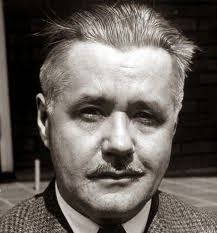
[His full name was Edison Tesla Marshall. His parents named him after the two feuding 'giants of electricity'.]
If his name doesn’t jog your memory, perhaps mention of some of his better-known works will. There was THE VIKING, which was made into a movie starring Kirk Douglas and Tony Curtis. Or how about YANKEE PASHA, THE ADVENTURES OF JASON STARBUCK, which became the film YANKEE PASHA.
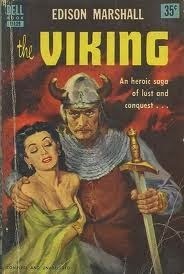
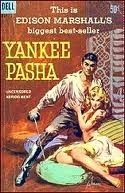 [A couple of Marshall's more popular works. Action, and lust, are common themes.]
[A couple of Marshall's more popular works. Action, and lust, are common themes.]EARTH GIANT came out in 1960. It relates the life and loves of perhaps the most famous strongman of all time, Heracles. From the start, the reader is vividly swept into the world of ancient Greece, and once begun, it’s one of those books impossible to put down.
Consider the following excerpt. Anyone familiar with Greek mythology knows the tale of young Heracles and the two snakes. Here is how Marshall describes it:
‘Then I felt a different kind of cold near my waist on the right and left sides. It was not sharply cold but dank, chill and slippery, a little like a clam newly picked from its shell, and it was moving with a twisting motion in two narrow bands toward my warm belly. I cannot recall real terror at the visitation that I instantly knew was by living things; rather my body was filled with loathing and belligerence. Instantly I snatched at the top of each creeper, and each hand caught hold of something about the size of my palm, broader at the base than at the end, a thing horrid to the touch, and both fists closed with the strength of fury.’
As you can see, the novel is first person, told through the perceptions and feelings of Heracles, himself. We are in his head from start to finish, and he becomes as real and vital as if he were standing next to us.
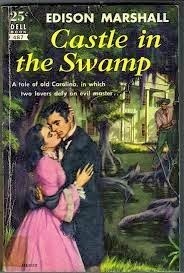
[Marshall even wrote romance novels. This is one of several.]
The same can be said of the legendary elements. From those snakes to the Twelve Labors and beyond, Marshall has a flair for imbuing the fantastical with superb realism.
So if you’re looking for something new to read, settle in and be treated to the alluring adventures of an EARTH GIANT.
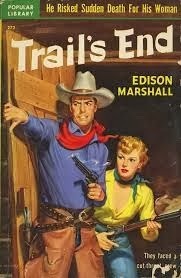
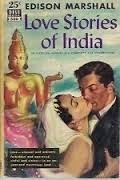
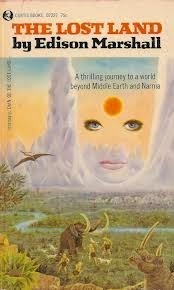
[From Westerns to exotic tales of India to a lost world, Edison Marshall wrote about them all.]

Published on February 17, 2014 13:42
February 8, 2014
THE OUTER LIMTS: OF THE INNER MIND
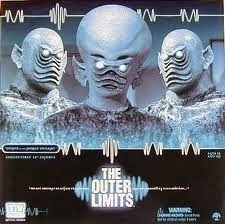
David Robbins c 2014
So you’ve watched every DVD episode of your favorite shows thirty times and you’re looking for something new. Or perhaps something old, a show from yesteryear that might ring your mental chimes. But which to pick, when there are so many to choose from?
If you’re into science fiction, permit me to recommend a series noted for its intelligent scripts, superb acting, and creative filming, namely, the original THE OUTER LIMITS.
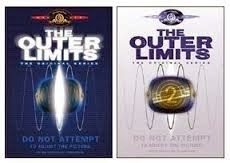
[Seasons One and Two DVD sets of the original series. A combined set is also available.]
Were I to try and define the show in one word, it would be ‘eerie’. For while the episodes were rife with science fiction elements, they were also---especially the first season---seeped in horror. The result is the eeriest TV show you will ever see.
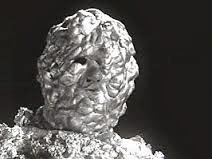
[The episode that scared my young self the most was an exercise in raw terror called A FEASIBILITY STUDY.]
I should mention it was in black-and-white. Some people are turned off by that. If you’re not one of them, then you’ll be amply rewarded. Most of the episodes have a cinematic quality that transcends the norm.
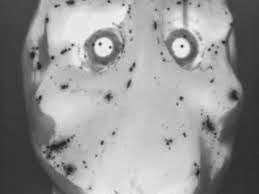
[The energy creature from THE GALAXY BEING. Exceptional for '60's fare.]
So do, in many respects, the special effects. Some of the creatures are extraordinarily well done. Others, it must be admitted, pale in comparison to today’s SFX, but even there, what the producers lacked in realism, they compensated for with a brilliant use of shadow and contrast.
A word about one of those producers, a gentleman by the name of Joseph Stefano. (If his name isn't familiar, he adopted PSYCHO for the big screen.) Stefano produced the first season and wrote many of the episodes, imbuing them with their unique 'feel'.
A lot of the best actors and actresses of the time lent their talents; Academy award winner Cliff Robertson, Academy Award winner Martin Landau, Academy Award winner (as well as Emmy and Golden Globes, too) Robert Duvall. Robert Culp, David McCallum, Sally Kellerman, Vera Miles, Adam West, William Shatner, Leonard Nimoy---the list goes on and on.
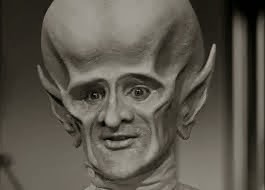
[What's that? You don't recognize who this is? Hint: it's one of the actors mentioned above.]
THE OUTER LIMITS only lasted for a year and a half, but has a huge cult following. So much so, a new OUTER LIMITS was launched in 1995 and lasted a lot longer. But it’s the original that has enshrined itself in the minds and hearts of so many.
Each episode began with, ‘There is nothing wrong with your television set’, and from there proceeded to launch our imaginations on wings of ‘awe and mystery’.
One of those episodes, THE ZANTI MISFITS, was ranked as one of the top 100 best science fiction shows of all time. Another, DEMON WITH A GLASS HAND, written by Harlan Ellison, won a Writers Guild award.
Other notable shows:THE CHAMELEON. Robert Duvall as a professional assassin whose next assignment is to kill aliens---by becoming one of them.THE INVISIBLES. Parasites from space are taking over the human race, one brain at a time.THE GALAXY BEING. A transceiver serves as a conduit into our world for an energy creature.THE MAN WHO WAS NEVER BORN. The release of a pathogen turned every human on the planet into a deformed mutant. Now one of those mutants has come back in time to try and change things.
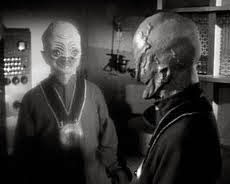
[Can you tell which one is Robert Duvall? Don't feel bad. He fooled the aliens, too.]
It would be remiss of me not to mention one other aspect that made these shows so memorable. The music---again, notably for the first season---by Dominic Frontiere, is as fear-inspiring as the visuals. Once heard, you never forget it.
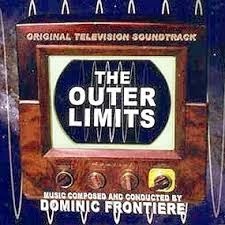
[A 3-CD collection of music from the series. There are other collections but this, so far as I know, has the most.]
If you're a completist, there was a comic book series based on the TV show, put out by Dell. And there are action figures and models of some of the creatures. (The photo at the top of the blog post is from THE KEEPER OF THE PURPLE TWILIGHT by Sideshow.)
So there you go. Let your mind be wrenched into contemplating realities you might never have conceived. Let your imagination soar from the confines of your comfy easy chair or couch into the dark and sinister realms of THE OUTER LIMITS.

Published on February 08, 2014 22:55
January 25, 2014
Agents of S.H.I.E.L.D: FROM STORY TO SCREEN
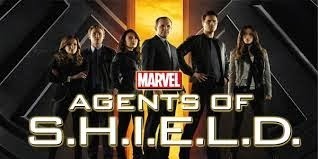
David Robbins
c 2014
There has been a lot of talk about Marvel’s Agents of S.H.I.E.L.D, the TV series spun off from a number of hit movies in which S.H.I.E.L.D was featured.
But where did the concept for S.H.I.E.L.D come from originally? you might wonder. From the fertile minds of Jack Kirby and Stan Lee, back in the Silver Age of comics.
It was 1965. Spies were all the rage. James Bond was hitting his stride on the big screen, and the small screen had a huge hit called THE MAN FROM U.N.C.L.E.
At the time, Marvel was just hitting its stride, too. SPIDER-MAN and THE FANTASTIC FOUR were selling like crazy. Thor was taking a title called JOURNEY INTO MYSTERY by storm.
Three other titles---TALES OF SUSPENSE, TALES TO ASTONISH and STRANGE TALES---featured two superheroes each month. Iron Man and Captain America were in TALES OF SUSPENSE. Ant Man/Giant Man, and the Hulk, were in TALES TO ASTONISH. (Giant Man was later replaced by the Sub-Mariner.)
It’s STRANGE TALES that interests us here. Initially, it had stories about the Human Torch from the FF, and Dr. Strange. Marvel dropped ‘Torchie’ for their newest brainstorm: NICK FURY, AGENT OF SH.I.E.L.D.
Below is the first cover. If you’ve never read the comics but seen the movies, you might be thinking, ‘Hold on a minute. Who is that guy? Everybody knows Nick Fury is really Samuel L. Jackson.'
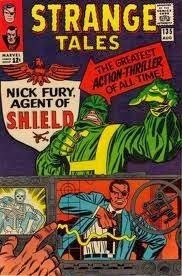
The explanation is convoluted but we’ll keep it simple. Basically, Marvel has two ‘universes’. There’s their ‘regular’ universe and their ‘Ultimate’ line. In the regular series, Nick Fury was ‘that guy’. In the Ultimate universe, which came much later, Nick Fury looked a lot like Samuel L. Jackson. When it came time to make the movies, the real SLJ was tabbed for the role.
Before we go on, another digression is called for. Stan and Jack didn’t pull Nick Fury out of proverbial thin air. Fury was already an established character in a hit series about World War Two---SGT. FURY AND HIS HOWLING COMMANDOS.
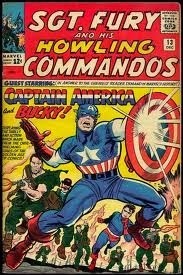
[Issue #13 of the SGT. FURY series co-starred Captain America.]
So when they decided to do a spy series, they had an inspiration. Why not use Nick Fury? In an earlier issue of THE FANTASTIC FOUR, Fury had co-starred as a government agent. It made perfect sense to have him be the new head of S.H.I.E.L.D.
Jack Kirby possessed a fantastic imagination. It wasn’t long before S.H.I.E.L.D went from a secret headquarters under a barbershop to an airborne aircraft carrier, the Helicarrier. And where Bond had his souped-up Aston Martin, Kirby went one better and gave Fury a flying car tricked out with all sorts of weapons. The early stories were full of high-tech gadgets.
Lee and Kirby also came up with great villains. One of their best was HYDRA, a sinister organization bent on world domination. Hydra’s motto: ‘Cut off a limb and two more shall take its place.’
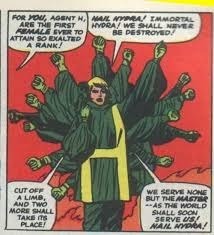 [You think I was kidding about that motto? Count the hands.]
[You think I was kidding about that motto? Count the hands.]It wasn’t long before the super-busy Kirby did just the layouts and other artists the finished art.
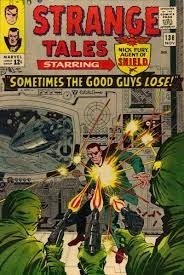
[John Severin was one of the artists who finished Kirby's layouts. His issues are terrific.]
The stories were heavy on action and light on sophisticated nuance. That changed when Jim Steranko came on board. If you weren’t around at the time, you can’t appreciate the impact he had. His art was spectacular. It elevated Fury to a whole new level. From psychedelic panels to adult subtext, his stories were like nothing the reader had ever seen.
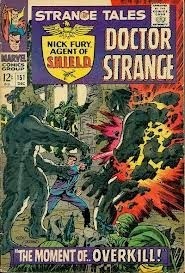
[The first Steranko issue. He went on to blow everyone's mind. Literally.]
Steranko stayed on the title for two years. He then kicked off Fury’s own mag, which ran for a year and half. Later---we’re talking about ten years---Nick Fury returned in a miniseries, NICK FURY vs SHIELD. It proved so popular that a new monthly title was launched. It lasted four years. Since then, the original Fury has appeared in a number of titles and occasional one-shots.
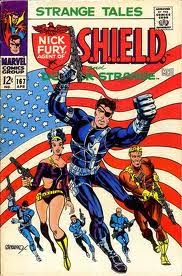
[Another great Steranko cover. Fury's combat suit was a staple of the run.]
And then there’s the Ultimate version of Nick, which brings us back to Samuel L. Jackson, the movies, and the TV series.
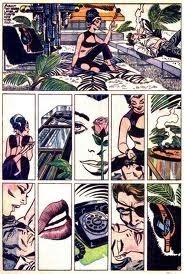
[Some of that sophisticated nuance I alluded to. Notice there isn't any dialogue.]
You might be wondering: ‘Okay. If the original guy was around during World War Two, how is he still kicking today?’ The answer is that he has access to a special formula that has prolonged his life.
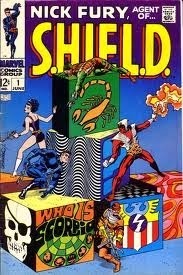
[The first issue of Nick's own series with art by.........you guessed it.]
If Fury sounds like your kind of kick-butt guy, Marvel has collected the entire STRANGE TALES run and the first solo series in three MASTERWORKS. They’re fun reads.

Published on January 25, 2014 15:58
December 29, 2013
STAGECOACH: TIMES 3
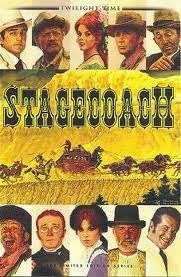
David Robbinsc 2013
If you’re a Western fan, then odds are you’re familiar with a movie considered to be a classic of the genre.
STAGECOACH, released in 1939, is not only regarded by many as one of the best Westerns ‘ever’, it has also been called one of the best movies, ‘ever’.
Based on a short story called ‘The Stage to Lordsburg’ by author Ernest Haycox, it was directed by the great John Ford and starred none other than John Wayne in his breakout role.
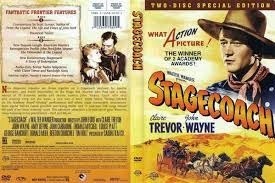
There’s nothing I can say by way of praise that hasn’t already been said many times over. Do an on-line search and you’ll see for yourself.
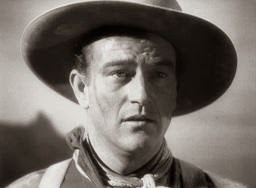
[John Wayne as the Ringo Kid, the first of three.]
Which is just as well, because the focus of this piece is on the second STAGECOACH. What, you didn’t know there was a second? (And apparently that wasn’t enough because Hollywood saw fit to make a third.)
Why am I focusing on the second and not the others? Because while it’s easy to get a DVD copy of the Duke’s version and, surprisingly, the third TV movie, the second film was next to impossible to find until it was released in a limited edition. By ‘limited’ we’re talking only 3,000 copies. So if you want one, start looking before they’re all taken or the price climbs to a ridiculous amount. It’s well worth the effort.
The second STAGECOACH came out in 1966. No, it’s not the masterpiece the Ford film is regarded, but it stars a stellar cast and entertains from start to finish.
First, though, let’s mention the director. The name Gordon Douglas might not ring a bell but a couple of his previous movies might. Douglas directed the science fiction gem THEM! (Yes, the one about giant ants.) He also directed an earlier Western, RIO CONCHOS, starring Richard Boone and Stuart Whitman. His approach here is interesting. The film was shot in the Colorado Rockies, and he uses sweeping vistas to spectacular effect. The violence is also much more graphic than the Wayne and TV versions.
As for those actors, how’s this for talent: Van Heflin (of SHANE and the first 3:10 TO YUMA fame), Bing Crosby, Red Buttons, a very young Ann-Margret, Bob Cummings, Stephanie Powers (THE GIRL FROM U.N.C.L.E.), Slim Pickens, Keenan Wynn, and in the Ringo Kid role, newcomer Alex Cord.
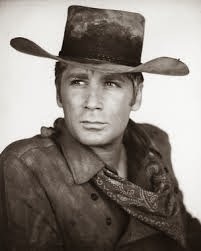
[Alex Cord as the second Ringo Kid. Two years after STAGECOACH, he starred in the cult favorite A MINUTE TO PRAY, A SECOND TO DIE.]
Last but certainly not least is ‘Michael Conners’. American audiences know him better as Mike Connors, the star of the long-running MANNIX TV series. Here he plays the Southern gentleman role John Carradine had in the original, only with a grittier edge.
The second movie delves into the characters more than the original, to the extent that some think the middle of the film is a tad too ‘talky’. But once the action kicks in, it does so in grand style. The sequence where the war party attacks the stage is superb. Some would say it’s even better than the original in that where the Wayne chase scene was on a long salt flat where Ford could use wide shots to best effect, here the chase is through a forest and then along a winding stream where there is as much danger of crashing the stage as from the warriors, and allows for more close-ups.
An interesting tidbit about the second STAGECOACH is that Norman Rockwell has a cameo. ‘The’ Norman Rockwell---the painter.
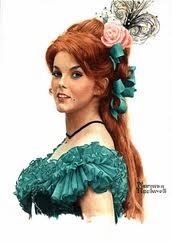
[A Rockwell painting of Ann-Margret. He did one for each of the main characters.]
And finally, the score is by the incomparable Jerry Goldsmith.
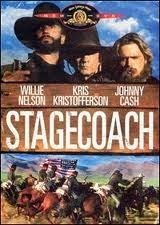
To complete your collection, get the TV film. It’s a ‘’buddy flick’ starring Kris Kristofferson as Ringo, with his friends Johnny Cash, Willie Nelson and Waylon Jennings along for the ride. (And some of their wives, too.) The plot is pretty much the same as the earlier movies, although in an odd change, Willie Nelson plays ‘Doc Holliday’ of Tombstone fame.

[Kristofferson as the Ringo Kid, in the foreground.]
So there you go. Three STAGECOACH movies you might like. Grab some popcorn and settle in for a fun ride, times 3.

Published on December 29, 2013 19:53



